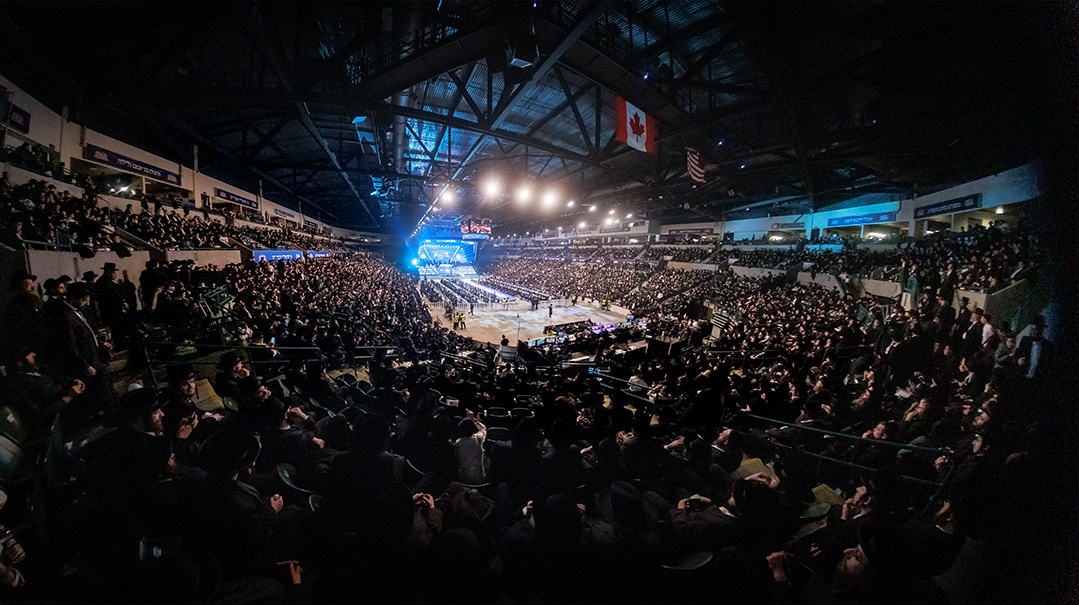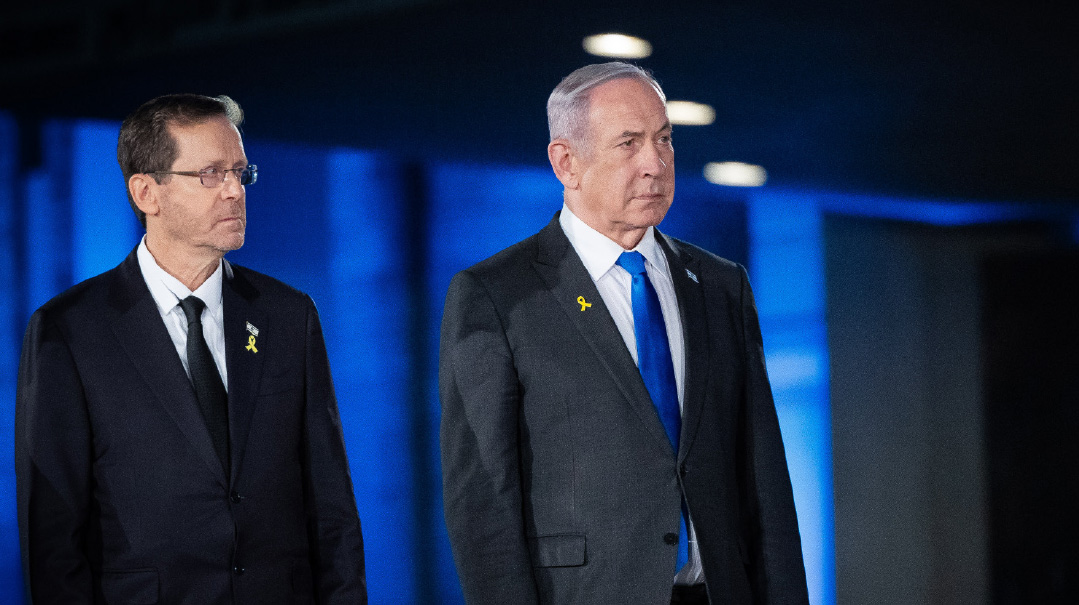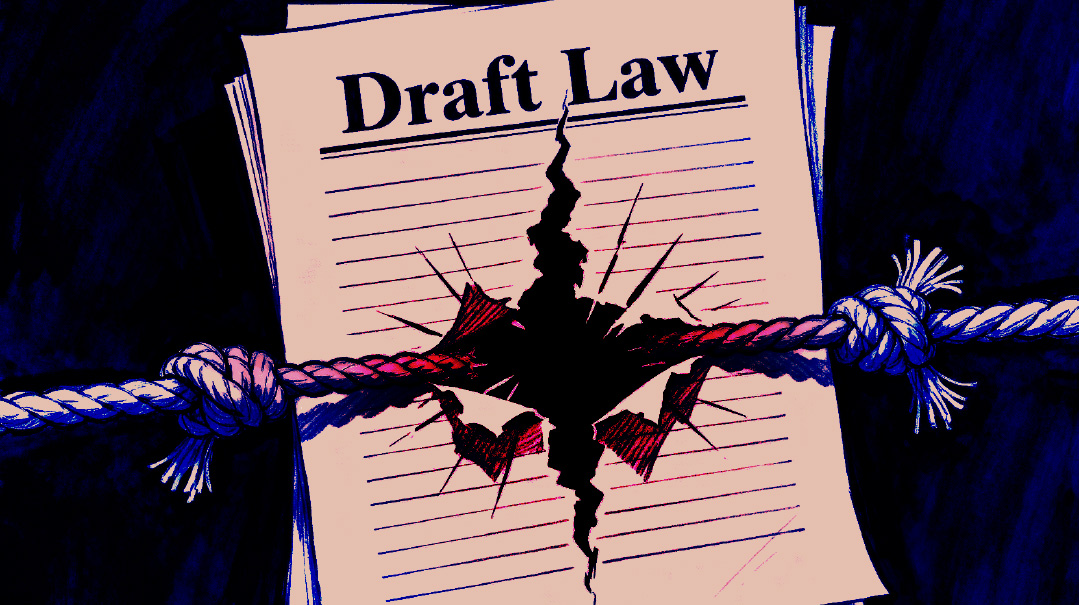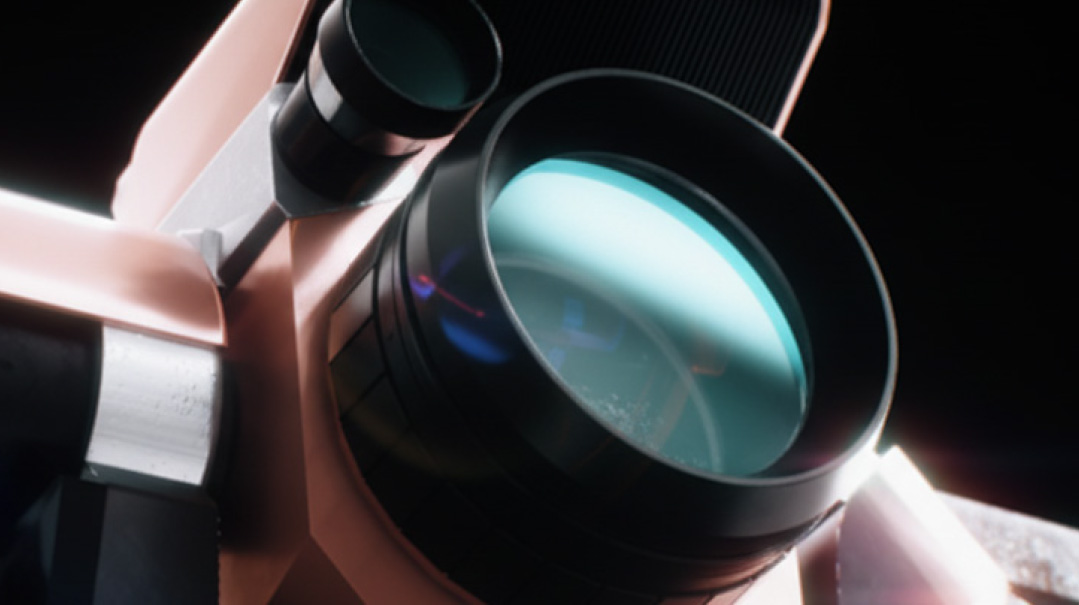Hand Above the Crowd

And then there was a sight to be seen: Tables full of Jews sitting and learning at all hours of day and night

Photos: Dirshu Photographers
The Chofetz Chaim constantly spoke of the need to come up to Shamayim with what the Gemara refers to as “talmudo b’yado.” Here’s one way to ensure that accountability
When the Chofetz Chaim completed the writing of his monumental halachic work, the Mishnah Berurah, he marked the occasion with a six-day celebration.
Beginning on Sunday and continuing for the next five days, local talmidei chachamim joined him each day for a festive meal at which they discussed in depth the topics appearing in another of the Mishnah Berurah’s six volumes.
But when Shabbos arrived, the Chofetz Chaim held yet a seventh celebratory meal. When asked to explain, he said, “Shabbos came to me and requested its own special simchah.”
A distinct echo of that joyous Shabbos in Radin of long ago could be heard reverberating throughout Stamford, Connecticut’s Armon Hotel last week, where 1,000-plus members of Dirshu’s international learning programs and their spouses gathered for a double celebration: Some were completing the cycle of study of Mishnah Berurah in the Daf HaYomi B’Halacha program, some were finishing Seder Moed in the Kinyan Torah program of Gemara study that follows the daf yomi schedule, and yet others were concluding both.
This weekend gathering had everything that has made a “Dirshu Shabbos” a must-attend event for a cross-section of Dirshu participants representing every communal sector and brand of Yiddishkeit. Of course, there was a rich menu of shiurim and derashos for men, and entertaining and edifying programming for women. There were tastefully catered meals, capped by a gala musical Melaveh Malkah–siyum.
And then there was a sight to be seen: Tables full of Jews sitting and learning at all hours of day and night.
From the weekend’s start on Friday afternoon until its finish on Sunday morning, there was barely an empty seat to be found at tens of tables spread across the huge hotel lobby and in the several meeting rooms-turned-batei medrash. By 6 a.m. on Shabbos morning, scores of men were in the hotel’s makeshift shul, doing what they do at that time every day of the week.
The folks at these tables aren’t eating or schmoozing or dozing nuch’n chulent — they’re immersed in Shas and Shulchan Aruch, diligently preparing for the monthly tests that create the accountability that’s at the heart of Dirshu’s decades-long track record of success. As the owner of a large Boro Park business who’s been plowing through Shas put it, “I know that in three weeks, there’s a Yom Hadin coming.”
Hovering above the Shabbos throughout was the spirit of Reb Yisrael Meir of Radin. So many of these lomdim were toiling over his Mishnah Berurah, his name and teachings on the lips of so many all Shabbos long.
At Seudah Shlishis, Rav Dovid Breslauer, who heads the kollel of Yeshiva Zichron Moshe in South Fallsburg, told a story of Rav Moshe Landinski, the rav of Radin. A genuine “Shas Yid” who could be heard mumbling the words of Abaye and Rava even as he retired to his bed for the night, Rav Landinski was once busy reviewing Maseches Yevamos by heart as he traveled somewhere by wagon, when he came to an impasse in his learning. He needed a Gemara to be able to resolve the difficulty, but where was he to find one out in the Belarussian countryside, far from any Jewish town?
Suddenly, he spied a kretshmeh, an inn, in the distance, and asked the wagon-driver to stop and allow him to spend a few minutes there, although he was dubious he would find any Gemaras there, let alone the one he needed. Entering the inn, he quickly approached its Jewish proprietor and asked if perchance he had any Gemara volume on hand. “Why, yes,” he replied, “I happen to have a Yevamos here…”
Upon his return to Radin, Reb Moshe hastened to the home of the Chofetz Chaim, eager to share with him his story of astonishing Hashgachah pratis in finding a Yevamos in his moment of need, in a kretshmeh in the middle of nowhere.
When he finished telling the tale, however, Reb Yisrael Meir turned to him and said, “That’s quite a story, Reb Moshe. But remember: In Olam Haba, there aren’t any kretshmehs…”
And, Rav Breslauer continued, it’s because “there aren’t any kretshmehs in Olam Haba” at which to stop and review one’s learning that the Chofetz Chaim constantly spoke of the need to come up to Shamayim with what the Gemara refers to as “talmudo b’yado,” a clear, organized recall of everything one has learned during his time in This World, a goal achievable through ongoing review and testing.
That’s why, in addition to Mishnah Berurah, the Dirshu program also incorporates the study of the many other seforim the Chofetz Chaim wrote to inspire Jews regarding observance of a whole range of mitzvos, from taharas hamishpachah to shemiras halashon to kashrus. Far Rockaway resident Rabbi Yehonoson Green, who just made his first siyum on Mishnah Berurah, says some people might think a topic like the importance of keeping kosher isn’t something frum Jews need to be learning about.
“But,” he says, “I teach in Yeshiva University’s program for beginners in Jewish observance, and just the other day, a student from South America was telling me he’d love to buy kosher meat but it’s just too expensive for his budget. Learning the Chofetz Chaim’s sefer on the topic — in which he addresses this very concern about high costs — made me realize I had a responsibility to help raise the money that could enable him to keep this crucial mitzvah.”
Rav Avraham Kivelevitz, a marbitz Torah based in Elizabeth, New Jersey, and a veteran Dirshu maggid shiur, shared a poignant anecdote about his father, Reb Meir Bentzion, a Holocaust survivor who rebuilt his life and raised a family in Memphis, Tennessee.
As a young boy in Lodz, Poland, Meir Bentzion heard that the Chofetz Chaim was on a train passing through town and planned to disembark briefly and greet the assembled crowd. Meir Bentzion made his way to the train station, but by the time he got there, the platform was packed solid with people. There was no way he’d be able to get anywhere near enough to even glimpse the great Chofetz Chaim.
Just then, however, the Chofetz Chaim lifted his hand above the crowd. The young boy caught sight of it, and that fleeting view of the tzaddik’s holy hand remained etched in his memory for life. Rav Kivelevitz said it’s his personal inspiration as well, as he embarks on yet another nonnegotiable cycle of teaching Mishnah Berurah (he even gave shiur while lying in a hospital bed in Houston, Texas).
And for anyone fortunate to experience the monthly test sites, the Mishnah Berurah shiurim, a siyum or even a Dirshu Shabbos, it’s abundantly clear that the Chofetz Chaim’s holy hand is guiding Jews still.
(Originally featured in Mishpacha, Issue 903)
Oops! We could not locate your form.






